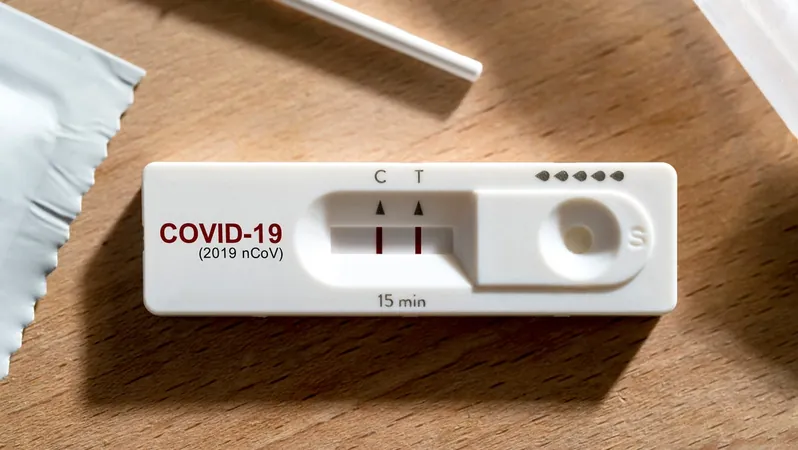
Experts Unravel COVID-19 Transmission: Can You Survive Close Contact?
2024-10-09
Author: Ting
As the COVID-19 pandemic continues, a new strain, the COVID-19 XEC variant, is spreading rapidly across the globe. Emerging from Omicron strains KS.1.1 and KP.3.3, this variant was first identified in Europe and has now made its way to the United States. Dr. Francesca Torriani, an infectious disease specialist from UC San Diego Health, warns, “We expect this could become the next dominant variant.”
Understanding COVID Transmission: What You Need to Know
The primary mode of COVID-19 transmission remains consistent across variants. Dr. Torriani emphasizes that exposure is most likely when you are in close contact with an infected person. The virus primarily spreads through respiratory droplets when someone coughs, sneezes, or even talks. These infectious particles can linger in the air, making transmission possible even at distances greater than six feet. Depending on the ventilation of the space, these virus particles can remain airborne for several minutes to hours, according to Dr. Nezar Dahdal of Banner Thunderbird Medical Center.
How Long Can COVID Survive on Surfaces?
While surface transmission of the virus is still a concern, it is less prevalent than inhaling infected droplets. The COVID-19 virus does not remain viable on surfaces for an extended period since it requires a human host to replicate. Dr. Dahdal explains, “On surfaces like glass, tabletops, or steel, the virus can survive from one to five days, depending on the material.” Additionally, the virus lasts up to one day on cardboard and can persist on wooden surfaces for as long as four days, according to the Cleveland Clinic.
Living with Someone Infected: Is It Safe?
Many may wonder about the risk of living with someone who has COVID-19. Surprisingly, it is possible to cohabitate with an infected individual without contracting the virus. Factors such as personal immune response, the specific variant, and hygiene practices play a crucial role. Proactive measures, such as frequent handwashing and disinfecting surfaces, significantly reduce the likelihood of infection.
Prevention is Key: Your Best Defense Against COVID-19
To mitigate the risk of contracting COVID-19, simple practices can be quite effective. Regular handwashing, diligent mask-wearing, and sanitizing commonly touched surfaces are essential steps. Staying current on vaccinations is critical, particularly for those over 65 or with weakened immune systems.
Additional Precautions: Enhancing Safety Measures
For added protection against COVID-19, consider keeping windows open to increase airflow in your home and opting to socialize outdoors whenever possible. Outdoor settings help reduce the concentration of airborne particles, as explained by Dr. Torriani.
Conclusion
As the XEC variant gains traction, staying informed and adhering to updated health guidelines is paramount. Protect yourself and loved ones by implementing these safety measures and keeping up with vaccinations. The battle against COVID-19 continues, but awareness and proactive action remain our strongest allies.

 Brasil (PT)
Brasil (PT)
 Canada (EN)
Canada (EN)
 Chile (ES)
Chile (ES)
 España (ES)
España (ES)
 France (FR)
France (FR)
 Hong Kong (EN)
Hong Kong (EN)
 Italia (IT)
Italia (IT)
 日本 (JA)
日本 (JA)
 Magyarország (HU)
Magyarország (HU)
 Norge (NO)
Norge (NO)
 Polska (PL)
Polska (PL)
 Schweiz (DE)
Schweiz (DE)
 Singapore (EN)
Singapore (EN)
 Sverige (SV)
Sverige (SV)
 Suomi (FI)
Suomi (FI)
 Türkiye (TR)
Türkiye (TR)